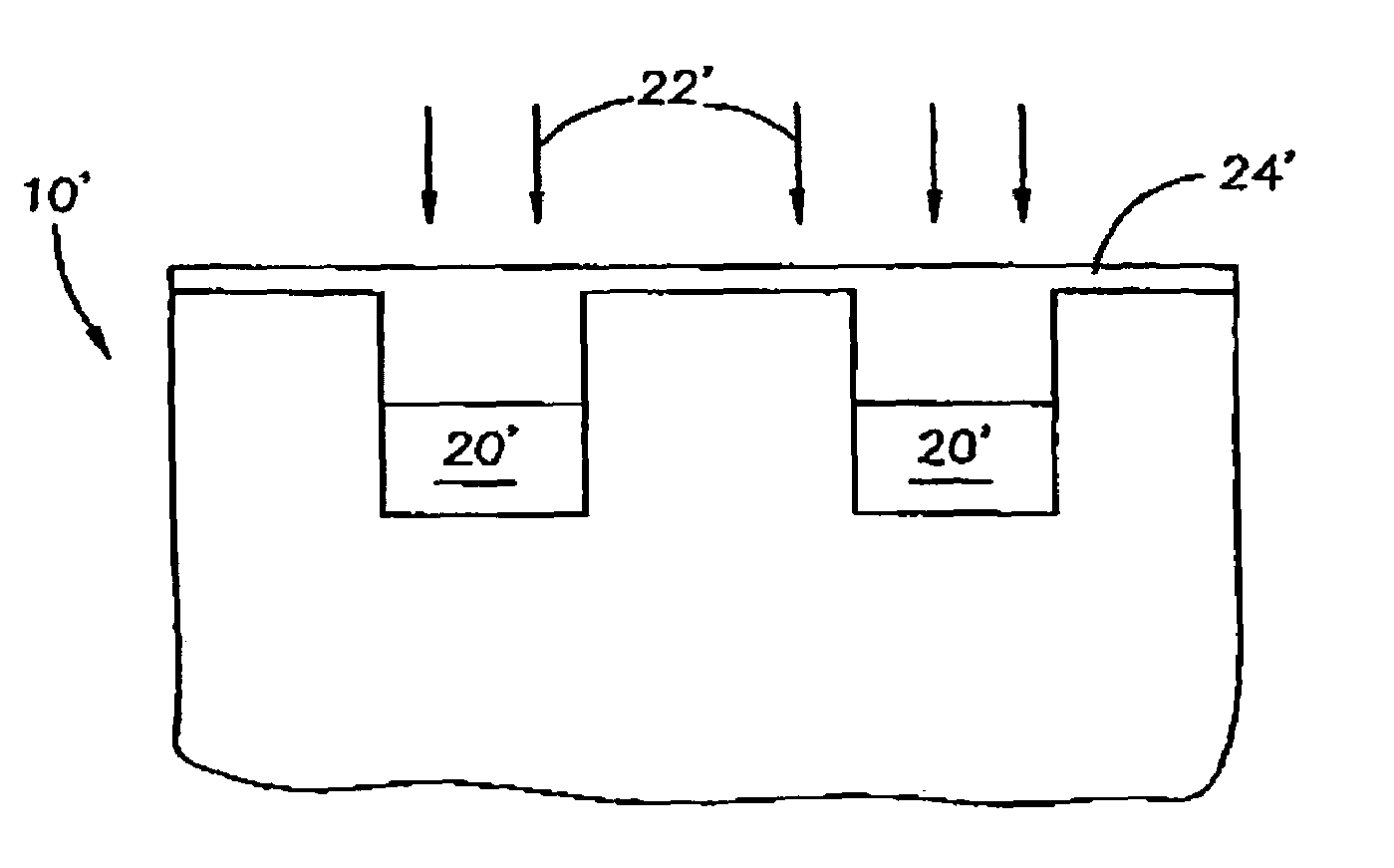Method of eliminating residual carbon from flowable oxide fill
a flowable oxide fill and residual carbon technology, applied in the field of semiconductor processing methods, can solve the problems of device degradation, affecting the isolation capability of the trench, etc., and achieve the effect of reducing the level of carbon, easy processing, and easy elimination of carbon
- Summary
- Abstract
- Description
- Claims
- Application Information
AI Technical Summary
Benefits of technology
Problems solved by technology
Method used
Image
Examples
example
[0045]Carbon-containing oxide films were deposited from TMS and O3 by a CVD process onto three wafer surfaces. Process parameters included a chamber pressure of about 100 torr and a wafer temperature of about 125° C., utilizing a Centura DxZ CVD deposition chamber from Applied Materials, Inc.
[0046]The two test films were then treated with an oxygen plasma under the same process parameters. The Control film received no post-deposition treatment with oxygen plasma. Table 1 provides the average of the bulk atomic concentrations (%) of the Test oxide layers and the Control layer.
[0047]
TABLE 1Si bondedSlotCOFto OSi / OTest wafer #1nd63.50.336.10.57(plasma treated)Test wafer #2nd63.30.236.40.58(plasma treated)Control wafer29.836.80.232.60.89
[0048]The results show a significant difference between the average of the bulk atomic concentrations (%) of the oxide layer of the test wafers exposed to the post-deposition treatment and the Control wafer. The results demonstrate that while the untreat...
PUM
| Property | Measurement | Unit |
|---|---|---|
| temperature | aaaaa | aaaaa |
| temperature | aaaaa | aaaaa |
| pressure | aaaaa | aaaaa |
Abstract
Description
Claims
Application Information
 Login to View More
Login to View More - R&D
- Intellectual Property
- Life Sciences
- Materials
- Tech Scout
- Unparalleled Data Quality
- Higher Quality Content
- 60% Fewer Hallucinations
Browse by: Latest US Patents, China's latest patents, Technical Efficacy Thesaurus, Application Domain, Technology Topic, Popular Technical Reports.
© 2025 PatSnap. All rights reserved.Legal|Privacy policy|Modern Slavery Act Transparency Statement|Sitemap|About US| Contact US: help@patsnap.com



